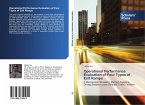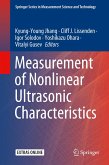This study investigated the actual truck acceleration capability at metered on-ramps. Truck acceleration performance data were collected through a video-based data collection method. A piecewise constant acceleration model was employed to capture truck acceleration characteristics. It was found that the existing acceleration length will affect truck drivers' acceleration behavior. At the taper type ramp that has limited acceleration distance, acceleration profile indicated a decreasing trend with distance. While for the ramp with an auxiliary lane that has sufficient acceleration distance, acceleration behavior is to have a high acceleration rate in the beginning, then acceleration rate decrease with speed increase, and high acceleration rate again as drivers approach the merging area. Based on the regression analysis of field collected speed versus distance profiles, acceleration lane length design recommendations were presented to accommodate trucks at metered on-ramps.








